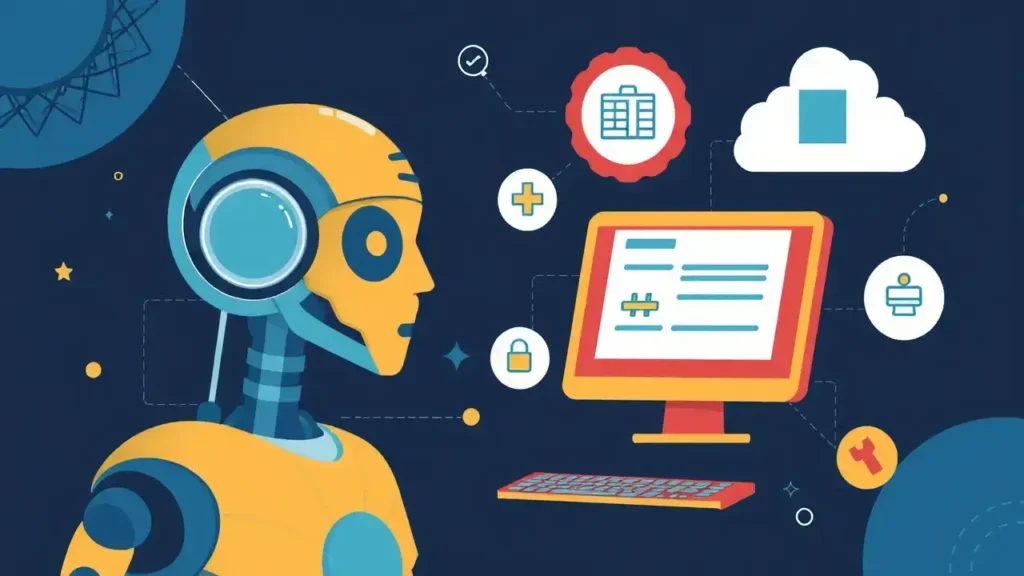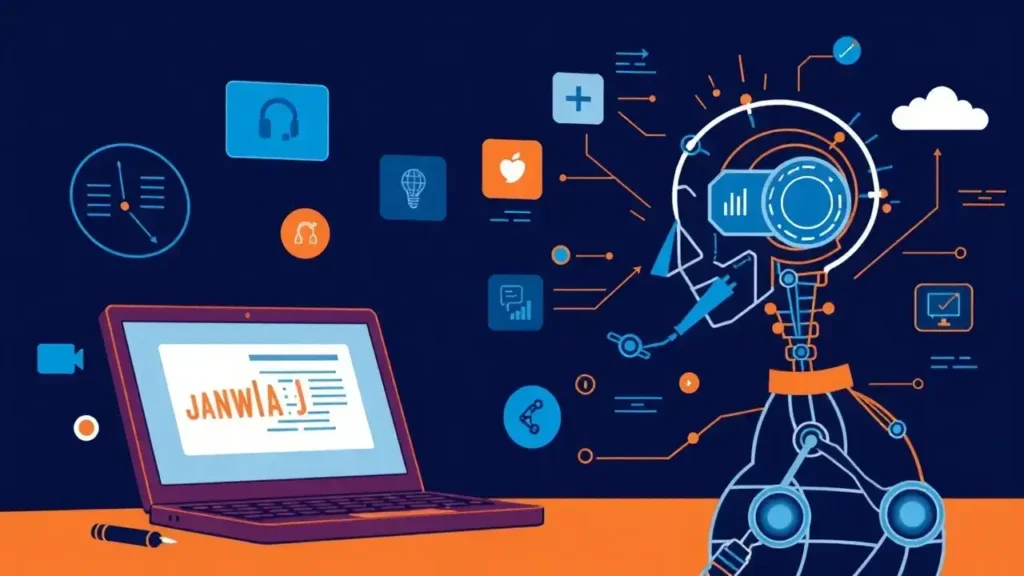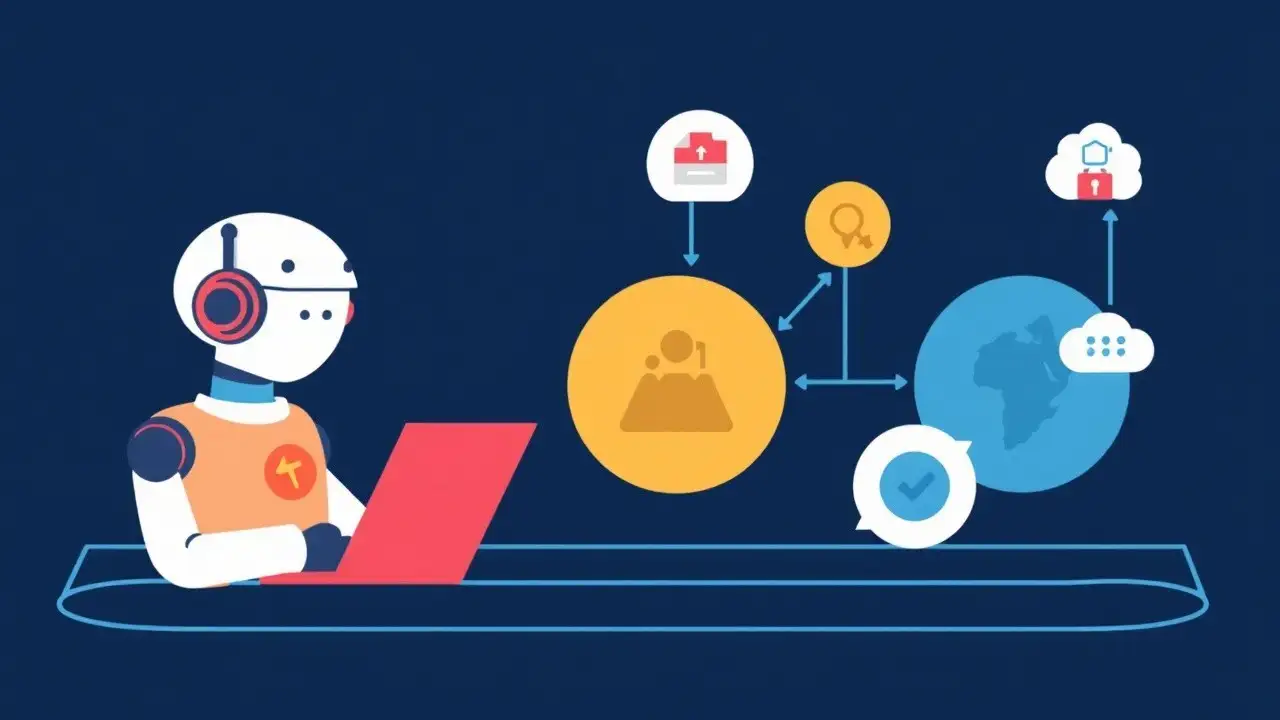For this article about the 10 must-have features in AI customer service tools for seamless support, AI is not just changing customer service—it’s redefining it completely. Businesses equipped with the right AI tools are seeing faster response times, better customer satisfaction, and streamlined workflows. The message is clear: in a market that demands instant, personalized support, AI doesn’t just offer an edge—it’s becoming essential.

But with so many AI customer service tools available, how do you choose the right one for your business? This guide explores the 10 must-have features, real-world examples of their impact, and practical advice to help you select the perfect solution tailored to your needs.
Table Of Contents
- 1 Why AI is Transforming Customer Service
- 2 10 Must-Have Features of AI Customer Service Tools
- 2.1 1. Natural Language Processing (NLP): Human-Like Conversations
- 2.2 2. Omnichannel Support: One Seamless Experience
- 2.3 3. Sentiment Analysis: Understand Emotional Cues
- 2.4 4. Predictive Analytics: Anticipate Needs, Solve Before Asked
- 2.5 5. Self-Service Options: Empower Customers
- 2.6 6. AI-Powered Chatbots with Human Handoff
- 2.7 7. Real-Time Analytics: Equip Agents on the Spot
- 2.8 8. Automated Ticketing and Routing
- 2.9 9. Voice Recognition for Accessibility
- 2.10 10. Seamless Integration with Existing Tools
- 3 Comparing Leading AI Customer Service Tools
- 4 Key Considerations When Choosing Your Tool
- 5 Real-World Success Stories
- 6 The Future of AI in Customer Service
- 7 Conclusion
- 8 Frequently Asked Questions About AI Customer Service Tools
Why AI is Transforming Customer Service
Traditional customer service has long struggled with common challenges—slow response times, inconsistent support across different channels, and a lack of personalization that leaves customers feeling frustrated and undervalued.
These issues not only impact customer satisfaction but can also hurt a company’s reputation and growth.
AI is stepping in to address these pain points, revolutionizing the way businesses interact with their customers. By leveraging AI-powered tools like chatbots, virtual assistants, and predictive analytics, companies can deliver faster, smarter, and more personalized support experiences.
These tools allow businesses to operate 24/7, handle high volumes of queries seamlessly, and provide tailored solutions by analyzing customer data in real-time.
With demand for AI-powered solutions skyrocketing, organizations that invest in these technologies are positioning themselves for long-term success.
They’re not just improving customer satisfaction but also boosting operational efficiency by cutting costs and streamlining workflows.
As AI continues to evolve, its role in shaping the future of customer service cannot be overstated.
10 Must-Have Features of AI Customer Service Tools
1. Natural Language Processing (NLP): Human-Like Conversations
Transform customer interactions with AI that understands and responds in natural, conversational language. Tools powered by NLP excel at answering queries quickly, whether it’s through chatbots, email responses, or even voice assistants.
These tools make customers feel like they’re talking to a real person, improving satisfaction and overall experience.

Example: A travel company uses NLP to enable chatbots that handle ticket booking queries 24/7, cutting customer wait times in half and allowing customers to feel supported at any hour, no matter their time zone.
2. Omnichannel Support: One Seamless Experience
Unify all communication channels—email, social media, live chat, and phone—into one integrated system. Customers enjoy consistent support, while agents gain a full view of interactions across platforms, eliminating the frustration of repeating information. This creates a smooth, seamless experience for both sides.
Example: A retailer integrates an AI tool to track orders across chat and email, which ensures customers can follow up on their issues wherever they left off, reducing repetitive queries and improving brand loyalty.
3. Sentiment Analysis: Understand Emotional Cues
Gauge customer emotions in real time, allowing your AI system to adapt its tone and responses appropriately.
This feature helps businesses identify dissatisfied customers early and respond proactively, turning potential complaints into opportunities to improve relations.
Example: AI highlights negative feedback for a telecom company, enabling customer service agents to reach out quickly and resolve issues. By acting on emotional cues, the company improves satisfaction rates and customer retention.
4. Predictive Analytics: Anticipate Needs, Solve Before Asked
Use past behavior and trends to anticipate customer needs and make timely recommendations. By addressing issues before they arise, predictive analytics helps businesses surprise and delight customers, improving engagement and boosting revenue.
Example: An e-commerce platform uses predictive analytics to suggest complementary products to customers based on their shopping history, increasing upsell opportunities by 30% and enhancing the overall shopping experience.
5. Self-Service Options: Empower Customers
Offer customers convenient tools such as virtual assistants, FAQs, and searchable databases to resolve their issues independently. Empowering customers to find answers on their own reduces strain on customer support teams and improves user satisfaction.
Example: A software company rolls out an AI-powered FAQ system, which allows users to quickly troubleshoot common issues, reducing repetitive ticket submissions by 40% and freeing up the support team to tackle more complex problems.
6. AI-Powered Chatbots with Human Handoff
Deploy chatbots that handle basic queries and seamlessly transfer complex issues to agents, ensuring customers get the help they need without delay. This ensures cost efficiency while maintaining high service quality.
Example: A banking institution uses AI chatbots to handle simple inquiries like balance checks, while account-specific issues such as loan approvals are escalated to live agents. This approach ensures customers receive accurate and personalized support when needed.
7. Real-Time Analytics: Equip Agents on the Spot
Provide instant access to actionable insights during customer interactions, allowing agents to solve problems more efficiently and confidently. Real-time analytics can help agents tailor their responses, improving the quality of support provided.
Example: An insurance company uses AI to analyze claims data instantly, equipping agents with the information they need to address customer inquiries quickly and accurately, significantly improving the resolution time for policy-related questions.
8. Automated Ticketing and Routing
Streamline issue tracking and ensure customer concerns are routed to the right team quickly. Automated ticketing reduces human error and speeds up the resolution process, ensuring no customer is left waiting.
Example: An IT firm uses an AI ticketing system that automatically prioritizes urgent issues and routes them to the correct support teams, reducing resolution times by 35% and enhancing customer trust in their services.
9. Voice Recognition for Accessibility
Offer voice-activated support for customers who prefer hands-free interactions or require alternative accessibility solutions. Voice recognition makes it easier for users to get assistance quickly while enhancing the inclusivity of your support system.
Example: A car rental service employs voice recognition AI, allowing customers to modify bookings or check availability over the phone without needing to navigate complex systems, improving convenience for all users, especially those with disabilities.
10. Seamless Integration with Existing Tools
Ensure smooth compatibility between your AI platform and other tools like CRM, databases, or analytics systems. Integration enables consistent customer data management and a unified support experience across platforms.
Example: A SaaS business integrates AI with its CRM, ensuring customer information stays accurate and accessible across all touchpoints. This not only saves time but also ensures consistent, personalized support every time a customer reaches out.

By embracing these must-have features of AI customer service tools, businesses can deliver faster, smarter, and more personalized support, creating happier customers and driving long-term growth.
Comparing Leading AI Customer Service Tools
Here’s a quick comparison of some of the top tools on the market to help you decide which fits your needs:
| Tool | Standout Feature | Ideal For | Price Tier |
|---|---|---|---|
| Zendesk | Omnichannel Support | Midsize to large businesses | $$$ |
| Intercom | Chatbots with Human Handoff | Small to medium businesses | $$ |
| Salesforce | Predictive Analytics | Enterprise-scale companies | $$$ |
Key Considerations When Choosing Your Tool
When selecting a perfect one from AI customer service tools, it’s essential to evaluate it thoroughly to ensure it aligns with your business needs. Focus on the following factors:
- Scalability: Can the tool handle your business as it grows? Look for a solution that can adapt to increasing AI customer service tools inquiries and evolving demands without compromising performance.
- Integration: Does the tool seamlessly connect with your existing software, like your CRM or help desk systems? A well-integrated tool ensures smooth workflows and minimizes disruptions when adding new technology.
- Industry Fit: Does the tool address the specific challenges and requirements of your sector? Whether you’re in retail, finance, or healthcare, choosing a platform tailored to your industry ensures a better fit for your customers’ needs.
- ROI: Evaluate whether the investment will deliver long-term value. Look at metrics like customer satisfaction, retention rates, efficiency improvements, and cost savings to measure the tool’s effectiveness over time.
When assessing potential vendors, be sure to ask detailed questions about the features they offer, customization capabilities to suit your workflow, and whether their platform complies with data privacy regulations like GDPR or CCPA. Taking the time to investigate these factors will help you choose a tool that not only meets your immediate needs but also supports your business in the long run.
Real-World Success Stories
- E-commerce: “Company X implemented AI ticketing systems to streamline their AI customer service tools support process. By automating query categorization and prioritization, they reduced customer query response times by an impressive 45%, which directly contributed to a 20% boost in overall customer satisfaction scores.”
- Travel: “Enterprise Y introduced chatbots powered by Natural Language Processing (NLP) to enhance their customer support experience. These chatbots effectively handled after-hours inquiries, reducing response delays by 50% and ensuring customers received timely assistance no matter the time of day.”
- Retail: “Brand Z adopted personalized AI analytics to better understand AI customer service tools preferences and shopping behavior. This allowed them to tailor recommendations and promotions, resulting in a 30% increase in upsell success rates and a more engaging shopping experience for their customers.”
The Future of AI in Customer Service
Emerging technologies like generative AI and augmented reality are set to further revolutionize customer service, transforming the way businesses interact with their customers. Generative AI can create personalized responses and automate complex queries, offering faster and more accurate resolutions. Meanwhile, augmented reality is enhancing AI customer service tools with more experience by enabling interactive, real-time solutions, such as virtual product demonstrations or troubleshooting guides. By adopting flexible, scalable AI solutions tailored to meet tomorrow’s demands, businesses can not only improve efficiency but also create more engaging, customer-centric experiences, ensuring they stay ahead in an ever-evolving market.
Conclusion
For this article about The 10 Must-Have Features in AI Customer Service Tools for Seamless Support, AI in customer service is no longer a novelty—it’s a necessity. By incorporating tools with the features outlined above, businesses can transform how they engage with customers and gain a competitive advantage.
Your next step?
Want to see these features in action? Subscribe to First AI Tools today and discover how AI can revolutionize your customer service strategy.
Frequently Asked Questions About AI Customer Service Tools
1. What are AI customer service tools?
AI customer service tools are intelligent software solutions designed to enhance AI customer service tools support. Powered by artificial intelligence, these tools can manage tasks like answering frequently asked questions, providing round-the-clock assistance, and streamlining workflows. Features such as chatbots, automated ticketing systems, and real-time language translation make them invaluable for modern businesses.
2. How do AI tools benefit my customer service team?
AI tools offer a range of benefits that can transform your AI customer service tools operations:
- Faster responses: AI-powered chatbots provide instant replies to customer inquiries.
- Increased efficiency: Automation reduces repetitive tasks, allowing your team to focus on more complex problems.
- 24/7 availability: Support your customers anytime, even after business hours.
- Scalability: Manage high volumes of inquiries without overwhelming your team.
3. Are AI customer service tools difficult to implement?
Not at all! Most AI customer service tools are designed for easy setup and integration. They work seamlessly with popular CRM systems and feature intuitive, user-friendly interfaces. Providers often offer comprehensive tutorials, setup guides, and AI customer service tools support to ensure a smooth implementation process, even for those without technical expertise.
4. Can AI tools handle complex customer inquiries?
Absolutely. While AI tools excel at resolving common and straightforward issues, many advanced systems leverage machine learning and natural language processing to tackle more nuanced queries. For highly complex problems, AI tools can efficiently pass the case to a human agent, providing detailed context to ensure a smooth transition.
5. Can AI customer service tools be customized?
Yes! Most AI tools are highly customizable, enabling you to tailor workflows, create personalized responses, and align the system with your brand’s tone and voice. This flexibility ensures that your AI-powered solution fits seamlessly into your business operations while delivering a consistent and engaging customer experience.










